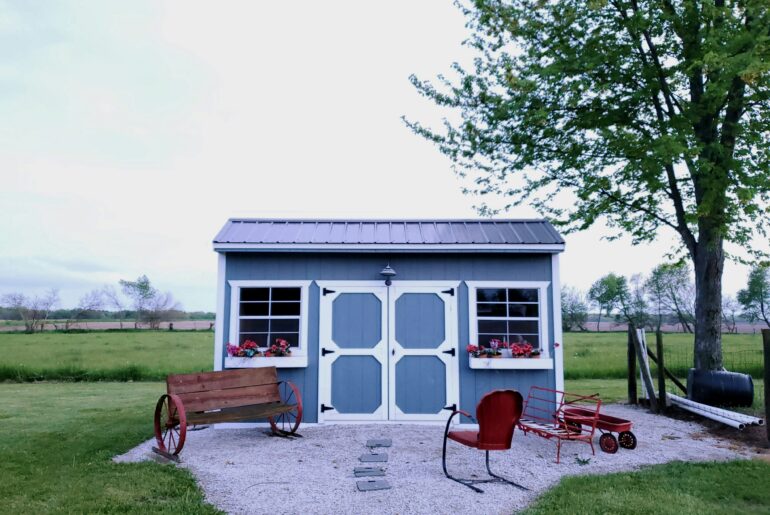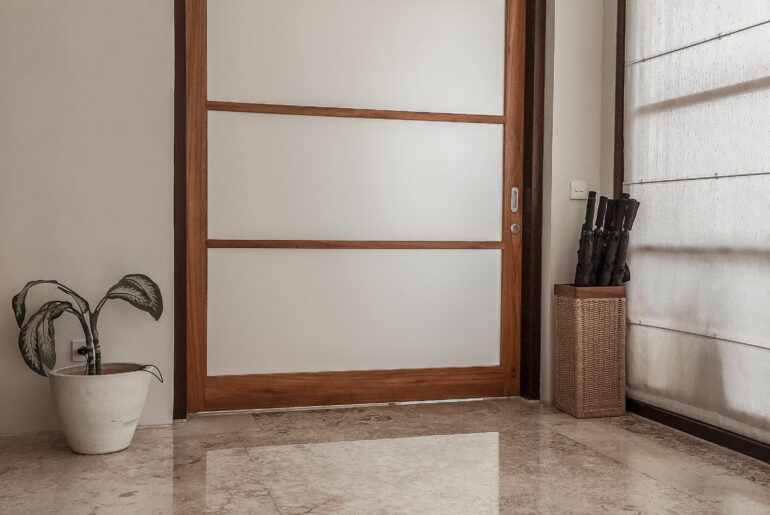If your home has aluminum windows that are fogged up and drafty, your energy dollars are literally going out the window. Aluminum windows have been known to be a significant source of heat loss from your home, so insulating them is a great idea.
Most aluminum windows are installed from the exterior and mounted directly to the wall sheathing around the window opening. Most also include a perforated nail fin that sits flat against the wall. The exterior is then installed over the nail fin and sealed against water intrusion.
However, over time, glass seals fail, and the sealant used to seal the nail fin dries up and falls away. This usually causes not only drafts, but allows moisture to enter the home. This additional moisture can overwork your HVAC, sometimes to the point of failure. The solution is to insulate the aluminum window frame, and even the glass if necessary.
Here we will discuss how to insulate aluminum window frames effectively, and how to know when a replacement window is the best option.
Why Do Aluminum Windows Need Insulation?
Aluminum windows are relatively thin compared to more modern vinyl and cladded replacement windows, so the R value is often low compared to wood or vinyl windows. Standard aluminum windows are double paned, which means each sash contains two panes of glass, with a vacuum formed in between.
When a seal fails on an aluminum window a gap is created, allowing moist air to infiltrate the space between the panes, and/or between the window frame and the wall. If the damaged seal is not repaired and insulated, the window will fog up. If the bad seal is around the frame, you’ll likely feel a draft when you pass by the window.
This is why insulating your aluminum windows is important to the health of your home, and your wallet. You can eliminate the drafts, reduce thermal transfer between the outdoors and the indoors, and add value at the same time, just by adding insulation.
A Word About Aluminum Storm Windows
Some aluminum windows are actually storm windows, which are installed over the existing windows for added protection against bad weather, hence the name. Some aluminum storm windows include low-E glass, but not all do.
Storm windows do not replace a faulty window, but rather protect it. Aluminum storm windows are often attached to the exterior trim surrounding the window, such as brick molding. Most designs have operable sashes as well for ventilation.
What Tools Will I Need to Insulate an Aluminum Window Frame?
You’ll need different tools depending on which insulation method you choose, but here’s a sample list to get you started:
- Personal protective equipment (PPE)
- Hammer
- Pry bar
- Utility knife
- Caulk gun
- Putty knife
- Stepladder (optional)
How Are Aluminum Windows Installed?
Standard aluminum windows are mounted to the wall sheathing on the exterior, not the window’s rough opening, or exterior trim. In most instances, the interior of the window is finished with wood or drywall, including a marble, wood, or drywall sill at the bottom.
Which Type of Insulation Do I Use to Insulate an Aluminum Window?
You can use sealants, insulation tape, foam rope, fiberglass, and spray foam to insulate an aluminum window frame. The goal is to close drafts between the frame, the rough opening, and the exterior sheathing.
Here’s a few tips for determining which insulation to use:
Sealants/Caulk
Sealants and caulk are good for filling in small gaps that allow air to pass around the window. If the gap is wider than ⅛”, foam rope, fiberglass, and spray foam are better options, as they will not shrink. Pros often choose elastomeric sealants instead of silicone if the home has a masonry exterior, as it is more durable.
Insulation Tape
Insulation tape is designed to be used with HVAC systems, but it also works great to seal around a window frame. Whether you’re insulating from the inside or the outside, remove the trim from around the window and tape the joint between the window frame and the rough opening. Replace the trim and caulk behind the trim before reinstalling it.
Foam Rope
Foam rope, also known as caulk saver, is a long foam rope sold in a loop. Foam rope can be compressed for a tight fit, so it doesn’t require adhesive. Use a putty knife or flat tipped screwdriver to press the foam rope into a gap and cut off the excess.
Fiberglass
Fiberglass is great for insulating gaps and cracks around the window frame. Most pros use the batt form of fiberglass, and just pull off whatever they need from a batt. Like foam rope, fiberglass is just pressed into the gaps and requires no fasteners or adhesives.
Spray Foam
Spray foam is likely the most effective window frame insulation, because it expands as it dries. This allows the foam to creep into the tiniest of gaps, sealing off any drafts. Use low rise spray foam by just spraying it into the cracks and allowing it to expand and cure. Don’t use open cell spray foam, as it may expand too much and damage the window.
How Do I Install Insulation On an Aluminum Window Frame?
Here’s a few useful tips for insulating an aluminum window frame:
- Always follow the directions. Each insulation type will have different PPE (personal protective equipment) requirements, so be sure and follow the directions closely.
- If you need to remove the trim anyway, inspect the window for signs of water damage. This is a great time to make any needed repairs, as that will ensure your insulation lasts longer.
- Install flashing on the exterior as needed. Flashing is a thin sheet of metal or vinyl, used to protect the window frame from water. Flashing will always last longer than caulk, so if possible, cover the entire rough opening with flashing before insulating.
- Only use materials approved for the use. For example, never use kitchen and bath caulk outdoors. These caulks are designed to be a superior water repellant, but they will break down over time from UV exposure.
Can I Insulate the Glass On an Aluminum Window?
You can use a variety of materials to help reduce drafts on an aluminum window. In a pinch, you can tape bubble wrap over a window with broken seals to reduce the draft. There are also window films available that filter out UV radiation, which helps reduce heat buildup inside the home.
However, if your window glass is fogged up, the best option is to install a replacement window, or have one installed. Fogged up windows are the result of a loss of vacuum between the panes, so they will require replacement.
How to Hire a Professional to Insulate Your Aluminum Windows
Professional window insulation companies make it easy to get help when you need it. Most will offer a free, no obligation estimate for the work, which will include an inspection. These pros can make other recommendations as well, such as installing insulation film onto the glass as well.
Now that you’ve learned a bit more about how to insulate an aluminum window frame correctly, you’ll be prepared to ask better questions. Feel free to discuss the details with a professional, as they will be happy to answer any questions you have.





